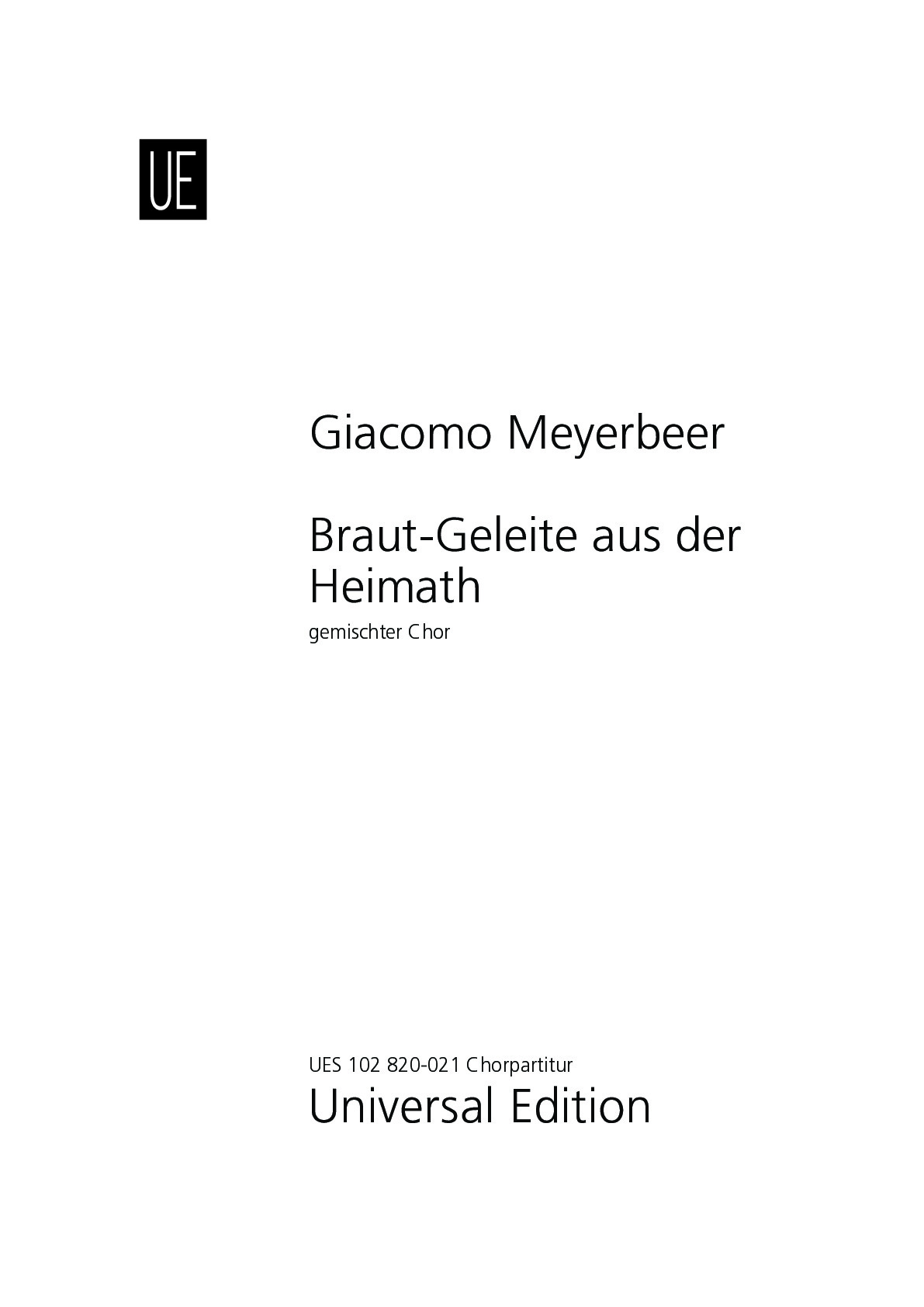

Giacomo Meyerbeer
Braut-Geleite aus der Heimath
Duration: 5'
Choir: mixed choir
Braut-Geleite aus der Heimath
Translation, reprints and more

Giacomo Meyerbeer
gemischter Chor (Braut-Geleite aus der Heimath)Type: Chorpartitur
Sample pages
Work introduction
Giacomo Meyerbeer’s forgotten treasures
Edited by musicians for musicians
Director: Andrea Chudak
Sheet music: Max Doehlemann
Braut-Geleite aus der Heimath is a song for mixed choir which Giacomo Meyerbeer composed between June 22 and 24, 1856, on the occasion of the wedding of Grand Duke Friedrich Wilhelm Ludwig von Baden and Princess Luise of Prussia on September 20, 1856. The lyrics are the poem Holder Liebesstern by Ludwig Rellstab (1799-1860). Meyerbeer copied his composition into the wedding album on July 7, 1856, and gave it to Heinrich Ludwig Egmont Dorn—the Kapellmeister of the Royal Theater and successor of Otto Nicolai— who was responsible for the music at the wedding festivities. However, Meyerbeer’s piece was not performed at the wedding celebration because of the large number of compositions that had been submitted. It was premiered on November 19, 1856 by the cathedral choir at a court concert in the presence of the royal couple and the queen of the Netherlands, who were said to have had an animated discussion with Meyerbeer during the intermission. Meyerbeer noted in his diary that he did not know how the king received his composition because it was performed after the intermission.
Braut-Geleite aus der Heimath was published by Berlin publisher Bote & Bock the same year it was composed. It was published by Brandus, Paris, in 1857 with a French translation by poet Emile Deschamps entitled Adieu aux jeunes maries and by English publisher Duncan Davison with an English one by John Oxenfort entitled This House To Love Is Holy. Both the French and the English editions were dedicated to Madame P. Millaud—presumably the wife of French banker, writer, journalist, and newspaper publisher Moise Polydore Millaud.*
The piece is for a mixed choir of four female and four male parts, which are often divided again.
This work was out of print and considered lost.
*We plan to publish the French and English versions separately.
